The Jeepneys of the Philippines 1
Aug 10, 2023 14:33:11 #
MosheR
Loc: New York City
Many contributors to Ugly Hedgehog have submitted photos of classic autos. I am doing the same here, but with a little twist. Previous submissions have shown beautiful cars that were usually exhibited at shows or are in museums. In one or two cases the member actually did some work on his own car, for which he has my undying admiration. The ones I am going to show, though, are actually in use right now on the streets and, although i interesting, are not exactly beautiful. I will also show some photos of one of the shops in which they are built and/or repaired.
When my wife and I travel, we are fully amenable to staying to places that are way below the standards we would expect here in the US. That’s because that’s the only choices we have if we want to see the places we want to see. So, for example, if we are in a jungle or on some isolated island, any old tent will do, including very small ones. In fact, as we have done so often, we even sleep out in the open and forego showers and privacy. As we tend to enjoy visiting the more “difficult” and out of the way places, this acquiescence to discomfort, as I already described several times over in previous sets, is a necessity. But when we do stay in places that are capable of meeting acceptable levels of comfort and cleanliness, that is where we will want to sleep.
In January of 2013 we traveled among many islands of the South Pacific and visited quite a few wartime sites, including the Philippines. Most of our time here was spent in the vibrant and bustling city of Manila, its capital on the island of Luzon. With nearly two million people in a relatively small space, it’s a very densely populated city with a wide diversity of neighborhoods. So while my wife and I stayed in a couple of very good hotels in the city’s upper class areas, we spent most of our touring time in what we felt was the far more interesting, rather earthier parts of the city, in its working class neighborhoods. The aspect of Manila that we found so intriguing, in fact, was that it’s a place where history and modernity entwine to create a captivating urban tapestry, and this is where we would see that. It’s a city of much cultural diversity and, although it went through many difficulties, including war and political upheaval, it showed, when we were there, a spirit that refuses to be dimmed.
Manila's history is a rich tapestry woven through centuries of conquests, trade, and colonial rule. When you’re there, for example you can easily see the the echoes of Spanish colonization that are clearly are evident in its historic district Amidst the historical landmarks, the city breathes with an energy that emanates from its people. The streets are a kaleidoscope of colors and sounds, from the chaotic traffic to the vibrant markets. The aroma of street food fills the air, enticing passersby with the sizzle of skewers and the promise of flavorful bites. And I have to say, they are quite good. (Just be certain that whatever you put in your mouth is very well cooked, and that you only drink bottled water … from unopened bottles)
Jeepneys, the iconic local buses, adorned with eclectic designs and flamboyant decorations, crazily weave through the streets ferrying both locals and we tourists to our various destinations. They are not merely vehicles, though; they are a living testament to the resourcefulness and resilience of the Filipino people, as I will try to explain.
The origin of the jeepney dates back to the aftermath of World War II when the Philippines found itself with an abundance of surplus military jeeps left by American forces. In need of affordable transportation, enterprising Filipinos repurposed these jeeps by extending the chassis, adding seats, and adorning them with vibrant colors and intricate designs. Thus, the iconic jeepney was born.
As you will see from the accompanying photos, they are more than just a means of getting from point A to point B. They are a canvas for artistic expression, often adorned with intricate paintings, murals, and decorations that reflect the culture, history, and even the personal beliefs of their owners. Each jeepney becomes a moving work of art, showcasing the talent and creativity of local artists and craftsmen. Riding a jeepney is an experience that brings people from all walks of life together in close proximity ,,, sometimes a bit too close in their hot, humid weather for a westerner … fostering a sense of community. The conversations, laughter, and camaraderie shared among passengers contribute to the unique social fabric of Manila.
Despite their cultural significance, jeepneys face challenges in the modern era. With concerns about air pollution and traffic congestion, there have been efforts to modernize the public transportation system in the country. Electric and eco-friendly alternatives have been proposed, leading to discussions about the future of the traditional jeepney.
Recognizing the jeepney's historical and cultural importance, various initiatives have emerged to preserve and celebrate this unique mode of transportation. Museums dedicated to jeepney history and art have been established, providing a platform to showcase the evolution of these vehicles over the years. As far as I know, this happened several years after our visit, so we didn’t see this. But we did get to visit several of the shops that build and refurbished these iconic vehicles, that had previously opened up to visitors, so we could witness their construction and rehabilitation.
Manila's soul rests in its people, a melting pot of cultures and traditions that blend seamlessly to create a harmonious mosaic. Even as the city embraces progress and modernity, the legacy of its past remains woven into its very fabric. Poverty and inequality still cast shadows, but from what we could see, the people of Manila seem to continue to find joy and strength in the face of adversity.
When my wife and I travel, we are fully amenable to staying to places that are way below the standards we would expect here in the US. That’s because that’s the only choices we have if we want to see the places we want to see. So, for example, if we are in a jungle or on some isolated island, any old tent will do, including very small ones. In fact, as we have done so often, we even sleep out in the open and forego showers and privacy. As we tend to enjoy visiting the more “difficult” and out of the way places, this acquiescence to discomfort, as I already described several times over in previous sets, is a necessity. But when we do stay in places that are capable of meeting acceptable levels of comfort and cleanliness, that is where we will want to sleep.
In January of 2013 we traveled among many islands of the South Pacific and visited quite a few wartime sites, including the Philippines. Most of our time here was spent in the vibrant and bustling city of Manila, its capital on the island of Luzon. With nearly two million people in a relatively small space, it’s a very densely populated city with a wide diversity of neighborhoods. So while my wife and I stayed in a couple of very good hotels in the city’s upper class areas, we spent most of our touring time in what we felt was the far more interesting, rather earthier parts of the city, in its working class neighborhoods. The aspect of Manila that we found so intriguing, in fact, was that it’s a place where history and modernity entwine to create a captivating urban tapestry, and this is where we would see that. It’s a city of much cultural diversity and, although it went through many difficulties, including war and political upheaval, it showed, when we were there, a spirit that refuses to be dimmed.
Manila's history is a rich tapestry woven through centuries of conquests, trade, and colonial rule. When you’re there, for example you can easily see the the echoes of Spanish colonization that are clearly are evident in its historic district Amidst the historical landmarks, the city breathes with an energy that emanates from its people. The streets are a kaleidoscope of colors and sounds, from the chaotic traffic to the vibrant markets. The aroma of street food fills the air, enticing passersby with the sizzle of skewers and the promise of flavorful bites. And I have to say, they are quite good. (Just be certain that whatever you put in your mouth is very well cooked, and that you only drink bottled water … from unopened bottles)
Jeepneys, the iconic local buses, adorned with eclectic designs and flamboyant decorations, crazily weave through the streets ferrying both locals and we tourists to our various destinations. They are not merely vehicles, though; they are a living testament to the resourcefulness and resilience of the Filipino people, as I will try to explain.
The origin of the jeepney dates back to the aftermath of World War II when the Philippines found itself with an abundance of surplus military jeeps left by American forces. In need of affordable transportation, enterprising Filipinos repurposed these jeeps by extending the chassis, adding seats, and adorning them with vibrant colors and intricate designs. Thus, the iconic jeepney was born.
As you will see from the accompanying photos, they are more than just a means of getting from point A to point B. They are a canvas for artistic expression, often adorned with intricate paintings, murals, and decorations that reflect the culture, history, and even the personal beliefs of their owners. Each jeepney becomes a moving work of art, showcasing the talent and creativity of local artists and craftsmen. Riding a jeepney is an experience that brings people from all walks of life together in close proximity ,,, sometimes a bit too close in their hot, humid weather for a westerner … fostering a sense of community. The conversations, laughter, and camaraderie shared among passengers contribute to the unique social fabric of Manila.
Despite their cultural significance, jeepneys face challenges in the modern era. With concerns about air pollution and traffic congestion, there have been efforts to modernize the public transportation system in the country. Electric and eco-friendly alternatives have been proposed, leading to discussions about the future of the traditional jeepney.
Recognizing the jeepney's historical and cultural importance, various initiatives have emerged to preserve and celebrate this unique mode of transportation. Museums dedicated to jeepney history and art have been established, providing a platform to showcase the evolution of these vehicles over the years. As far as I know, this happened several years after our visit, so we didn’t see this. But we did get to visit several of the shops that build and refurbished these iconic vehicles, that had previously opened up to visitors, so we could witness their construction and rehabilitation.
Manila's soul rests in its people, a melting pot of cultures and traditions that blend seamlessly to create a harmonious mosaic. Even as the city embraces progress and modernity, the legacy of its past remains woven into its very fabric. Poverty and inequality still cast shadows, but from what we could see, the people of Manila seem to continue to find joy and strength in the face of adversity.
Quite a contraption.
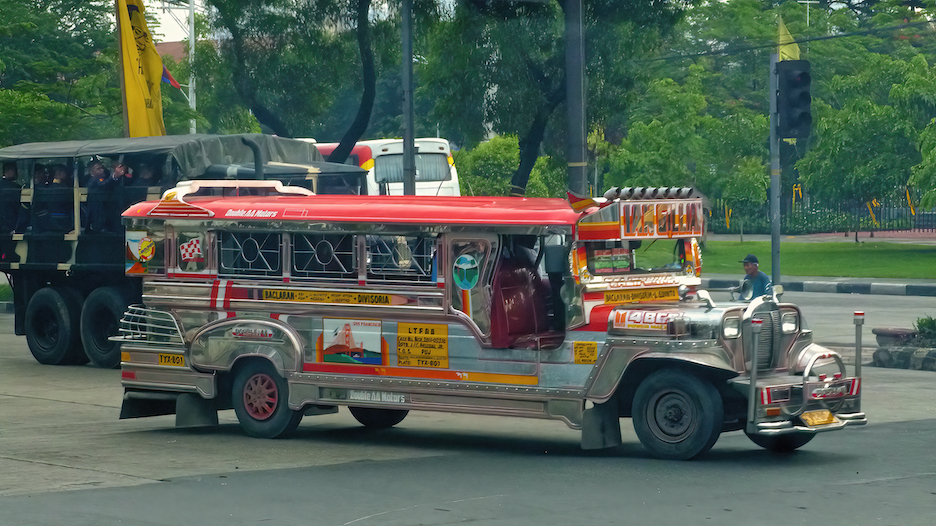
All made by hand.
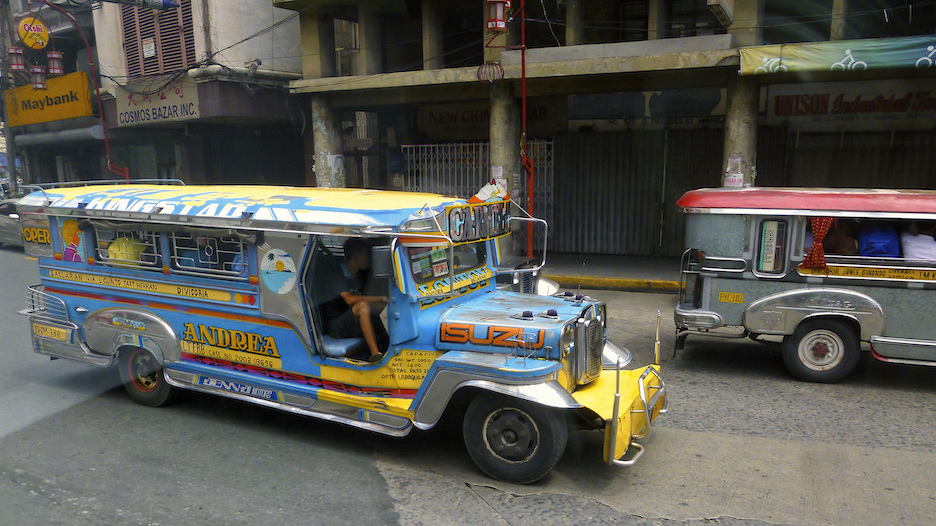
They have to conform to certain rules regarding public transportation.
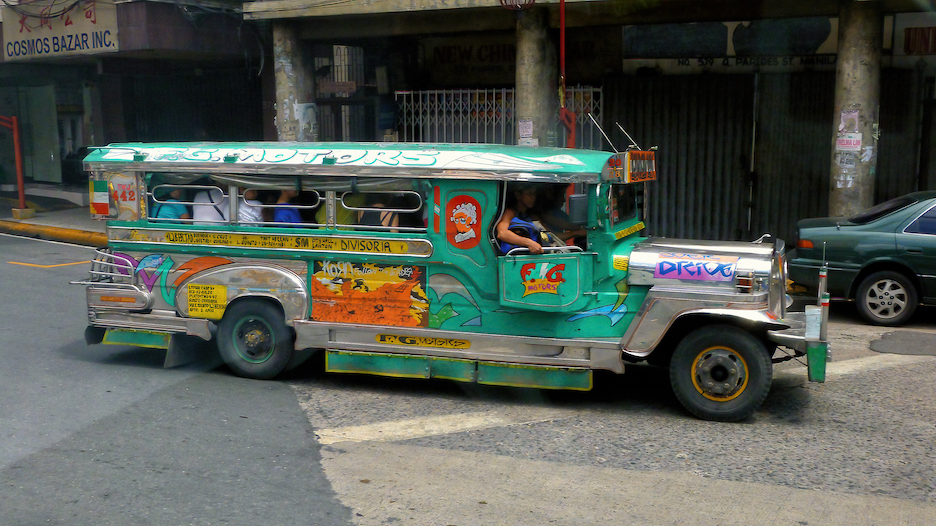
But otherwise, like snowflakes or fingerprints, no two are alike.
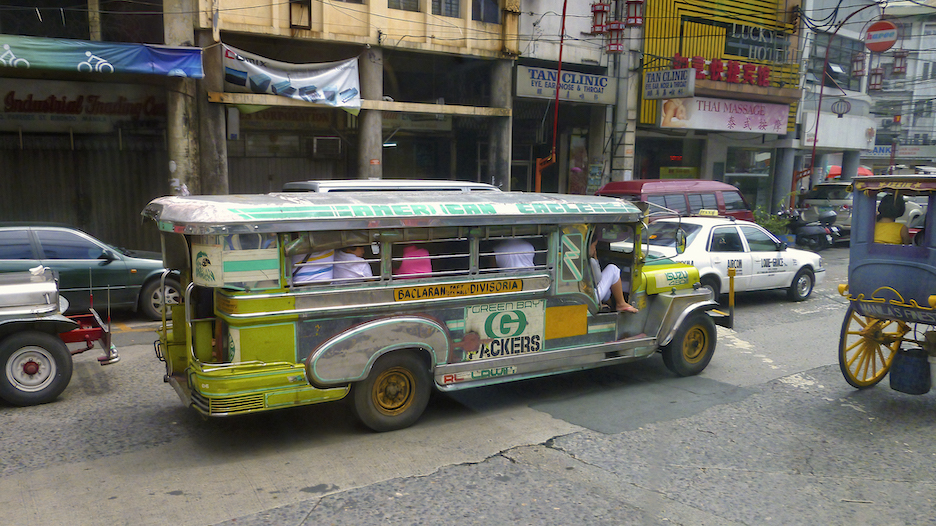
They're almost always very crowded.
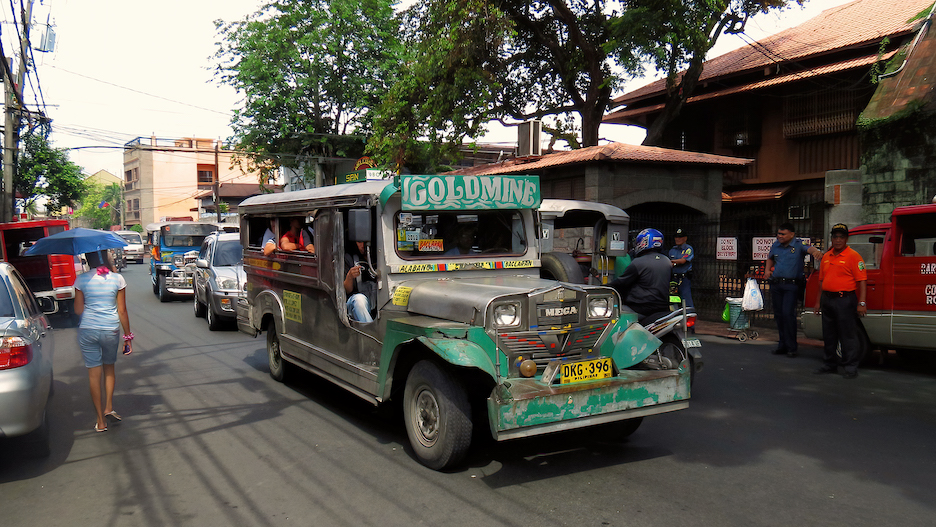
And they're usually covered in chrome ... much as our cars used to have.
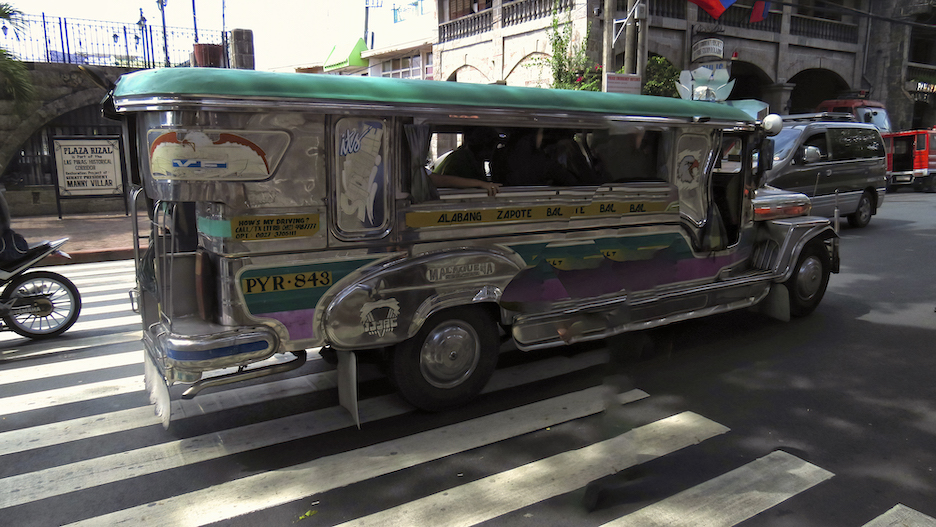
They have all the information the rider needs, right on their sides.
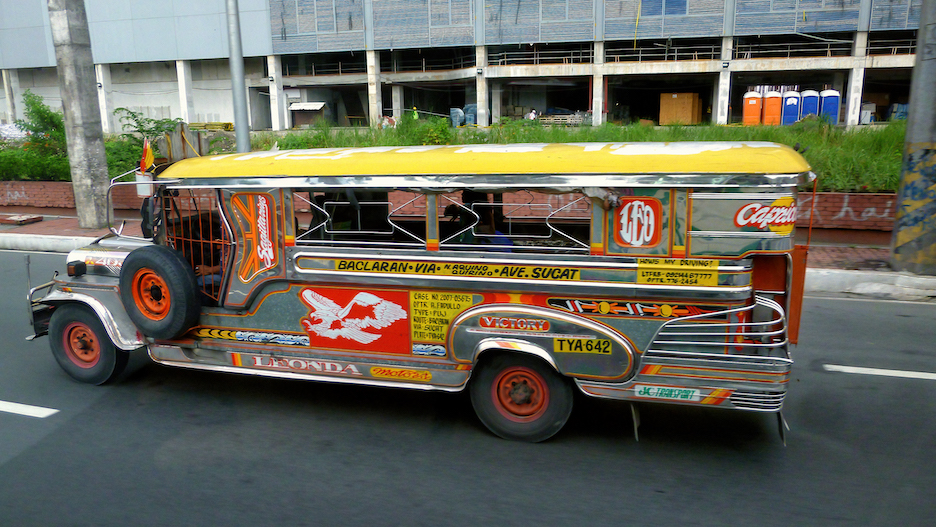
Aug 10, 2023 14:34:41 #
Aug 10, 2023 14:40:34 #
Aug 10, 2023 14:45:12 #
Awesome 👍. I find it interesting that they all have the same rear fender shape. Even though some have different rear axles they all have identical rear fenders. Lol
Aug 10, 2023 14:58:38 #
MosheR
Loc: New York City
UTMike wrote:
Interesting, Mel. I was unaware of this.
Thanks, Mike. I was hoping it would be, but you never know.
Aug 10, 2023 14:58:55 #
Aug 10, 2023 14:59:38 #
MosheR
Loc: New York City
Drbobcameraguy wrote:
Awesome 👍. I find it interesting that they all have the same rear fender shape. Even though some have different rear axles they all have identical rear fenders. Lol
That is absolutely the kind of thing I am not smart enough to notice. Thank you for pointing it out to me.
Aug 10, 2023 15:10:03 #
Aug 10, 2023 15:10:59 #
Aug 10, 2023 15:41:45 #
MosheR wrote:
Many contributors to Ugly Hedgehog have submitted ... (show quote)
Amazing. Thank you for your story as well as the many pictures of the vehicles. A close friend of mine (not with UHH) probably has seen Jeepneys in person because he has visited Manila and other cities in the Philippines with his Filipino wife. They met in CA, USA. I think I'll ask him about the Jeepneys.



Aug 10, 2023 15:47:13 #
MosheR
Loc: New York City
lamiaceae wrote:
Amazing. Thank you for your story as well as the ... (show quote)
I'm sure your friend would know a lot more about them than I would. And I'll bet his wife would know even more.
Aug 10, 2023 19:05:15 #
Aug 10, 2023 20:03:25 #
MosheR
Loc: New York City
PAR4DCR wrote:
They sure don't look like Ferrari's Mel!
Don
Don
Now you have me disappointed, Don.
Aug 11, 2023 06:33:53 #
Aug 11, 2023 07:06:01 #
MosheR wrote:
Many contributors to Ugly Hedgehog have submitted ... (show quote)
Fantastic set!!!
Are these Converted Military Jeep left over from WWll ?
If you want to reply, then register here. Registration is free and your account is created instantly, so you can post right away.








